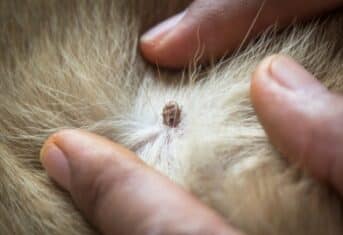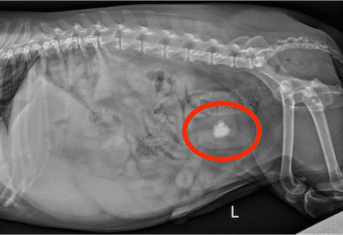What’s New for Fleas and Ticks?

What’s New for Fleas and Ticks?
Ticks have been around forever. Even the ancient Roman author, Pliny the Elder (23-79 A.D.) was vexed by these creatures. He is reported to have said, “Ticks: the foulest and nastiest creatures that be.” Ancient Rome must not have had fleas, or Pliny would have included them on his nasty creature list as well. Besides being nasty, fleas and ticks spread disease to you and your pets.
A new kind of collar
Collars to prevent flea and tick infestations have been around a long time, but their effectiveness has been limited. A veterinary school professor of mine said, “The only fleas killed by a flea collar are those squashed when the collar is put around the pet’s neck.” Polymer technology has advanced flea collars from a dusty plastic strap to a timed release medical device, and in the newest version even repels ticks before they attach. For additional information on year-round flea and tick control, check with the Companion Animal Parasite Council.
A new way to remove ticks
One of my most frequent calls is from an owner who finds a tick attached to their dog or cat and wants to know how to get rid of the nasty critter. The internet is rife with misinformation on how to remove ticks – nail polish remover, smoking matches and petroleum jelly. All of these are bad ideas. Either grasp the tick firmly with tweezers or a tick removing device and pull the tick, head included, out of the skin. This is easier said than done in a wiggly dog with a teeny tiny embedded deer tick. Now, there is a way that will make pet owners ecstatic with an easier way! A new a non-toxic product has been designed and produced to loosen the tick’s grip on the skin and allow it to be lifted off your pet with a cotton ball or moistened pad.
A new method to decrease ticks in the environment
Currently under investigation for the control of Lyme disease are bait boxes for mice. This clever study aims to attack Lyme disease where it starts, with the deer ticks that feed on the reservoir host of the Lyme disease bacteria: the white footed mouse. Bait boxes are placed outdoors. Mice enter the box and a mouse sized dose of fipronyl gets rubbed on their back. Fipronyl is an Environmental Protection Agency registered product found in several top spot tick and flea preventative medications for dogs and cats. When applied to mice, it kills ticks, decreasing the number of ticks which can bite you and your family.
Do you still want more information about ticks? The Connecticut Agricultural Experiment Station has an exhaustive tick handbook available online.
Confused about flea and tick preventatives for your dog and cat? Make an appointment with your veterinarian to find the right prescription for your pets. Follow their directions exactly, because reactions to flea and tick products are most commonly due to improper use of these products.

































